Home > Case Studies > Employee Directory Software
How Modern Organization Chart Improved Financial Sector Workflow

Spotlight
The client is a mid-sized financial services company with over 250 employees spread across five countries. As the organization grew, it faced increasing complexity in managing teams and internal communication. The leadership team sought better visibility into roles, reporting structures, and workforce planning. By adopting our solution, they achieved centralized organizational mapping and gained data-driven insights to make faster, more informed talent and resource decisions.
Highlights
Faster Decision-Making
Reduction in Onboarding Time
Improvement in Audit
Customer’s Speak

Mike Reynolds
Legal Operations Manager
“
Managing contracts manually led to missed deadlines, compliance risks, and inefficiencies. With SharePoint Contract Management, automation streamlined workflows, reduced manual effort, and ensured compliance. Now, we focus more on clients instead of paperwork.
Challenges Faced Before Implementing Employee Directory 365
As the company scaled, they began noticing a few key friction points in day-to-day operations. Here are the challenges the company was facing.
1) Lack of Real-Time Role Visibility
As the firm expanded, understanding who held which responsibilities became difficult, especially across departments and remote offices. Managers spent valuable time trying to identify the right contacts for tasks.
2) Delayed Approvals and Decisions
The outdated reporting structure caused bottlenecks. Without clear hierarchy visibility, decisions requiring multi-level approval were delayed, affecting productivity and service delivery.
3) Onboarding New Employees Was Inefficient
New hires had difficulty understanding their team structure and reporting managers. This led to dependency on HR for basic organizational information, increasing the onboarding time.
4) Difficulty Navigating Compliance Workflows
Financial institutions must maintain clarity in who is responsible for key compliance actions. Without a clear, accessible organization chart, internal audits were slower, and compliance reporting was often delayed.
5) No Centralized Ownership
Whenever teams were restructured, updates were scattered across spreadsheets, HR systems, and emails. This fragmented approach led to inconsistent communication and misalignment across teams.
How We Solved It – The Solution
To tackle these challenges, the organization implemented a modern organization chart that helps
1) Real-Time Organizational Clarity
With help of automation, every change new hires, promotions, exits was reflected immediately. This real-time visibility removed unclarity about roles, improving daily coordination across departments.
2) Dashboards for Instant Insights
Each department had access to a tailored dashboard showing team structure, leadership roles, and vacancies. This helped managers allocate resources efficiently and allowed employees to quickly understand reporting lines.
3) Controlled Access for Secure and Relevant Visibility
Access was configured based on roles and responsibilities. Executives and senior leadership could view the entire organizational structure to support strategic decisions, while team members only saw information relevant to their department or function. The modern organization chart allowed for transparency within teams supporting collaboration without compromising privacy.
4) Faster Onboarding with Guided Structure Visibility
New employees were able to explore a clear, interactive view of the company’s structure from their first day. They could immediately identify their reporting managers, understand team dynamics, and locate key contacts across departments.
Modern organization not only helped new hires settle in faster but also reduced the volume of basic structural questions directed at HR.
5) Seamless Collaboration Across Remote and Hybrid Teams
Whether employees worked remotely, in-office, or in hybrid setups, everyone had consistent access to the same live organization chart. Team members could easily identify who to reach out to across departments or regions, fostering cross-functional collaboration and reducing delays caused by communication gaps. Modern organization helped them to maintain alignment and engagement across distributed teams.
Results & Business Impact
The implementation of a modern organization chart had a measurable impact across key areas.
1) 60% Faster Decision-Making
With clearer visibility of team roles and leadership hierarchies, department heads were able to make quicker decisions. Internal approvals that once took days were finalized within hours, and lengthy email chains were significantly reduced due to direct access to responsible individuals.
2) 70% Reduction in Onboarding Time
New hires gained instant clarity on where they fit within the organization through visual team maps and reporting lines. As a result, HR received fewer structural queries, and employees reached productivity benchmarks much sooner cutting onboarding timelines nearly in half.
3) 55% Improvement in Audit Response Time
Compliance teams benefited from a transparent view of responsibilities linked to regulatory tasks. During audits, they could quickly identify accountable roles and backups, leading to faster document preparation, reduced errors, and stronger confidence during regulatory checks.
Industry
Finance Sector
Location
United Kingdom
%201%20(2)_BYY2CYLVD2.png)
Automating Contract Management Boost Compliance & Efficiency
Read more
%201%20(2)_BYY2CYLVD2.png)
Automating Contract Management Boost Compliance & Efficiency
Read more
%201%20(2)_BYY2CYLVD2.png)
Automating Contract Management Boost Compliance & Efficiency
Read more
%201%20(2)_BYY2CYLVD2.png)
Automating Contract Management Boost Compliance & Efficiency
Read more



























